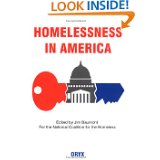New information from the National Low Income Housing Coalition’s analysis of US Census data shows the housing crisis in Kalamazoo County is getting much worse instead of better. The number of renters in Kalamazoo County increased to 35,645 households, still about a third of the county. But the number of extremely low income renter households increased by 38% from approximately 8,000 households to just under 11,000 households. These households earn 30% or less of the area median income, which means they are very poor. How poor? For a single person, it means their annual income is less than $13,300, or less than $1108 per month. Two-thirds of these households, or 7,405 households, pay over half their income for rent and utilities. These are households who are just one small crisis away from tipping into homelessness.
What is the housing gap we need to address? There are 2,755 rental units in our county that are affordable and available for this group. An apartment is affordable if you can pay your rent and utilities with 30% of your monthly income. To say an apartment is available to this group means that either an extremely low income household lives in the apartment or it is designated for extremely low-income individuals. This is relevant because some people with better incomes live in apartments that would be affordable to the poorest renters in our county. Another way to say this is that there are 43 affordable rental units in our county for every 100 extremely low income households. There are only 25 affordable units that are in fact available for every 100 extremely low income households.
So we need to create 8,230 rental units in our county that are affordable and available to extremely low income men and women and their families.
How can we do it?
P.S. Thanks to Kathy Roberts of LISC for sharing this information with me.
